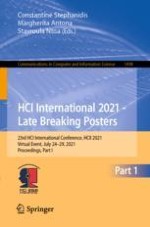2021 | OriginalPaper | Buchkapitel
Speech Emotion Recognition Using Combined Multiple Pairwise Classifiers
verfasst von : Panikos Heracleous, Yasser Mohammad, Akio Yoneyama
Erschienen in: HCI International 2021 - Late Breaking Posters
Aktivieren Sie unsere intelligente Suche, um passende Fachinhalte oder Patente zu finden.
Wählen Sie Textabschnitte aus um mit Künstlicher Intelligenz passenden Patente zu finden. powered by
Markieren Sie Textabschnitte, um KI-gestützt weitere passende Inhalte zu finden. powered by
